Shanghai
Thursday October 13
Our first visit in Shanghai was to the Jade Buddha Temple, which is less than 100 years old. It was lavishly decorated. It was so mystical.
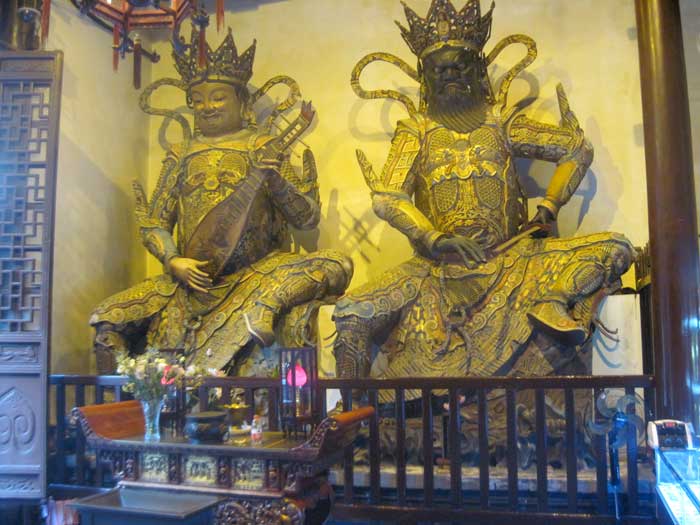


Looking down on the courtyard.

Here is an interesting juxtaposition – the old and mystical with the new and real world of the product of man’s mind. It was cloudy and a little misty this day, but you can see the marvelous skyline along the Huangpu River.



After a stroll along the Bund we went to a carpet factory, where there was a demonstration of the weaving, and, of course, a showroom.


Our evening was free, so we walked around and ate at a “hole-in-the-wall” restaurant. They spoke no English and we spoke no Chinese. Fortunately the menu had pictures, so we just pointed. I had stew, which included pieces of bone. I noticed that the restaurants just use a meat cleaver to chop the meat, rather than removing the meat from the bones. Afterwards I asked them, using sign language and pointing, if they could tell us in English what we ate. On their smart phones was a translator, so they entered the Chinese characters for our food, and the English version appeared. John had mutton stew for one dish and pork intestines for another.
Crossing the street was a free-for-all. We had to wait for a break in the traffic, and watch out for cars, busses, silent electric motor scooters, and bicycles.
Friday October 14
We took a bullet train to Suzhou. It was very clean and comfortable. Over the door at the end of the car was a speedometer. We got up to 309 km/hr, or 193 mph. The ride was so smooth. Along the way we saw miles and miles of twenty- to thirty-story concrete apartment buildings, with more being built all the time. Many were not occupied, as they were not finished.



After departing the train in Suzhou, we took a canal boat ride, visited a silk factory, and walked in the Wangshi Gardens.
We took a canal boat ride on a canal that connects to the Grand Canal, a 1,104-mile long canal begun 2,400 years ago, linking Beijing to Hangzhou.

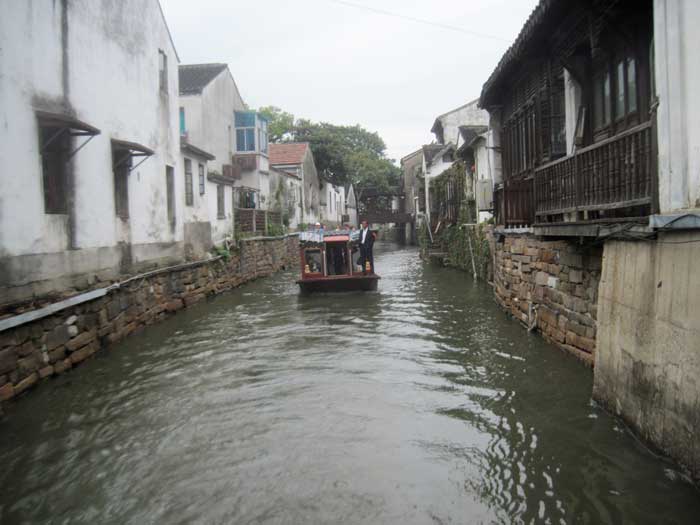

Our next stop was the silk factory, where we saw them make silk starting with the silkworms eating mulberry leaves. It was fascinating to learn and see the process.
The mulberry trees here are a different variety than the ones I grew up with that had mulberries that the birds loved.
.
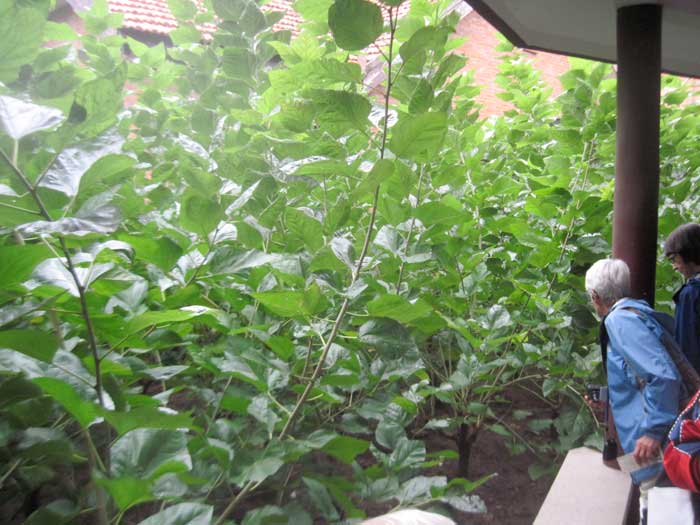
Here are silkworms, devouring the leaves. I touched them and they are so very soft.

After they spin their cocoons, the cocoons are graded. Sometimes there are twin cocoons, which produce twice as much silk.
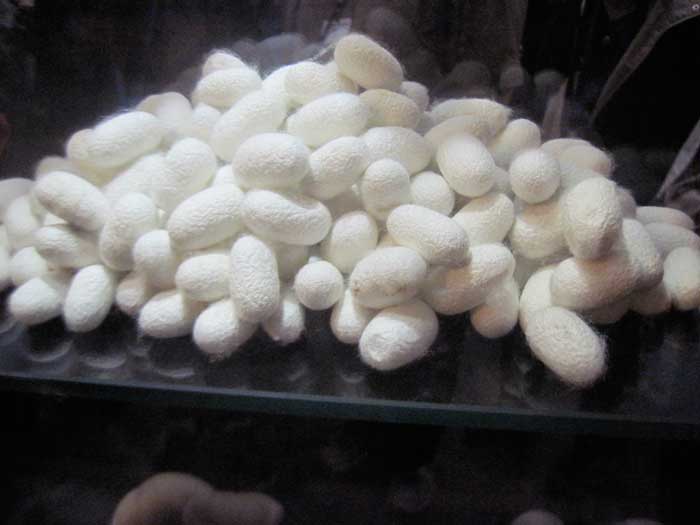

The workers find the starting thread of each cocoon. Several are combined to be spun into a thread that has strength. The cocoons whir around as the silk is unwound from them.


The thread is then woven into cloth.

At one time, Suzhou guarded the secrets of silk-making so closely that smuggling silkworms out of the city was punishable by death.
At the ever-present showroom, Suzanne bought a beautiful silk and cashmere scarf.
We visited the Wangshi Gardens, built in 1140. It was very peaceful. It is also known as the Master of the Nets Gardens and is considered among the finest gardens in China. “The garden demonstrates Chinese garden designers’ adept skills for synthesizing art, nature, and architecture to create unique metaphysical masterpieces. The Master of the Nets is particularly regarded among garden connoisseurs for its mastering the techniques of relative dimension, contrast, foil, sequence and depth, and borrowed scenery.”

We returned to Shanghai, and that evening we listened to a talk by a local professor who told his personal story of his parents and family during the turmoil in China and the Cultural Revolution. It was very shocking and so sad.
Saturday October 15
We were treated to a performance at a local Senior Center. Here is one of the dances that was performed.

We walked through a huge farmers market, where you could buy anything. We were told that the Chinese eat everything. We saw pig’s ears, pig skin, and chicken feet for sale. Notice the meat cleaver being used on some kind of red meat. You get the bone pieces with the meat.
We were told that the Chinese government imposes price controls on fresh vegetables, “so that everyone could afford them.” Hmmmm. The government needs a little Economics 101.
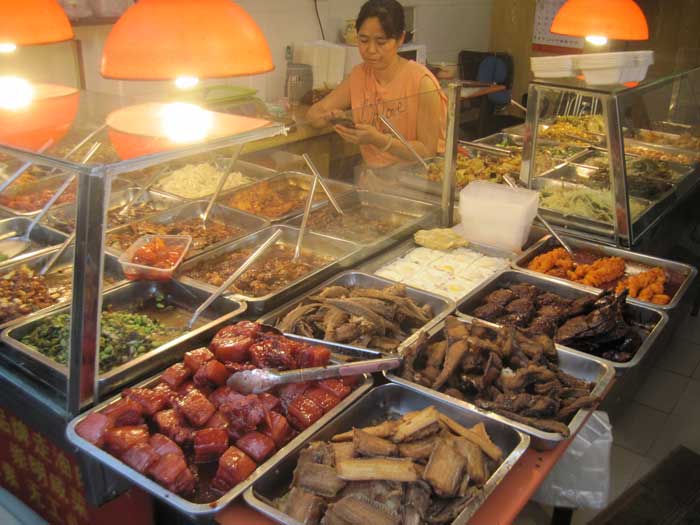





For lunch, we visited a local person who served us a home-hosted lunch. The group was split into two, to visit two homes. This was touted as a “typical” Chinese meal.
John took pictures of the entire home. It looked very crowded. The hostess was a piano teacher, and so John played the piano for the group. We also gave the hostess a Texas t-shirt, and a Texas pot-holder with Texas wildflowers on it.



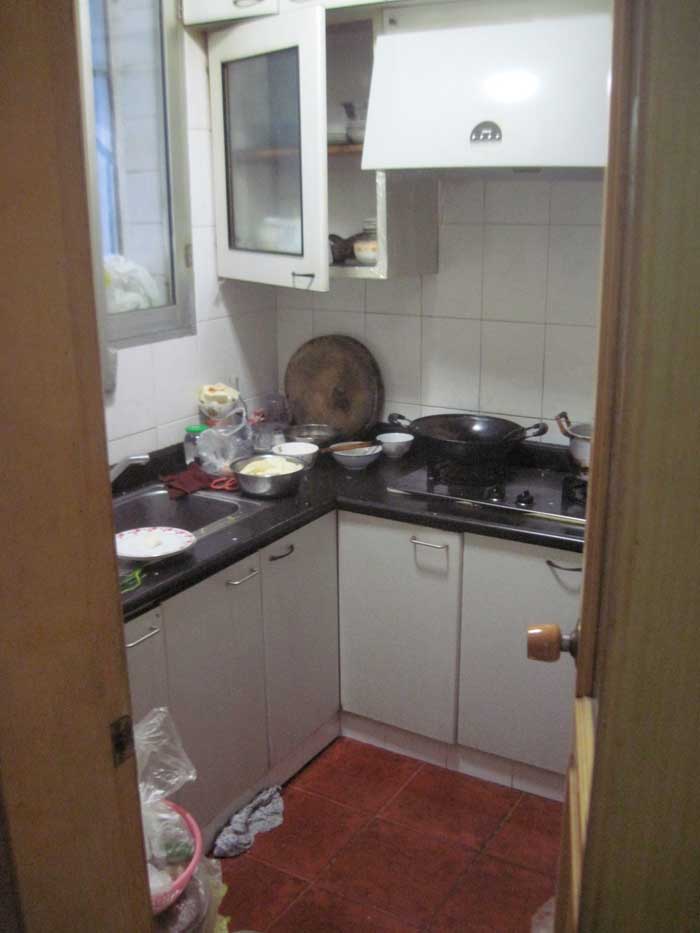

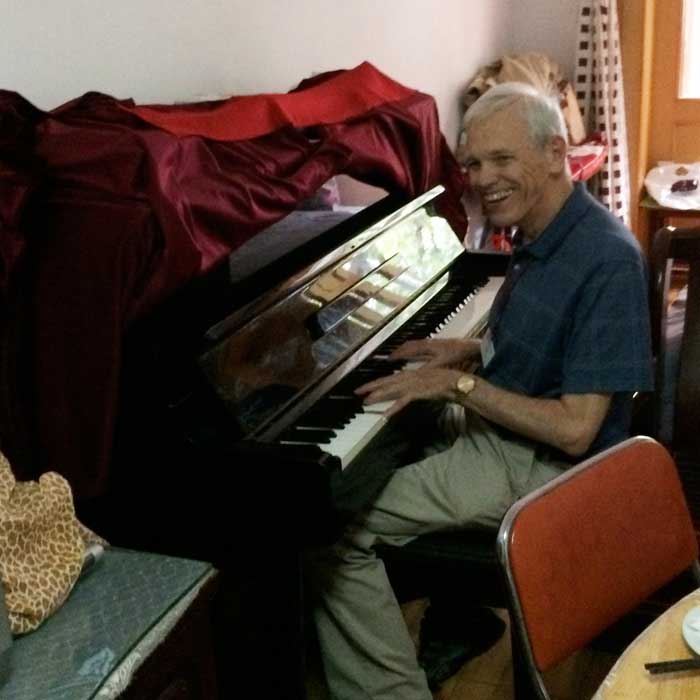

That afternoon we saw a performance of era-Shanghai. It reminded me of a circus performance with no animals. No photographs were allowed, so we bought a DVD.
We then walked around the French Concession, a labyrinth of narrow streets and shops. I noticed in many places a mass of wires – maybe telephone, cable, electric, etc. It reminded me of old photos of Manhattan.

Sunday October 16
In the morning we visited the Shanghai Museum. We enjoyed the traditional costumes of various tribes, as well as some of the calligraphy.

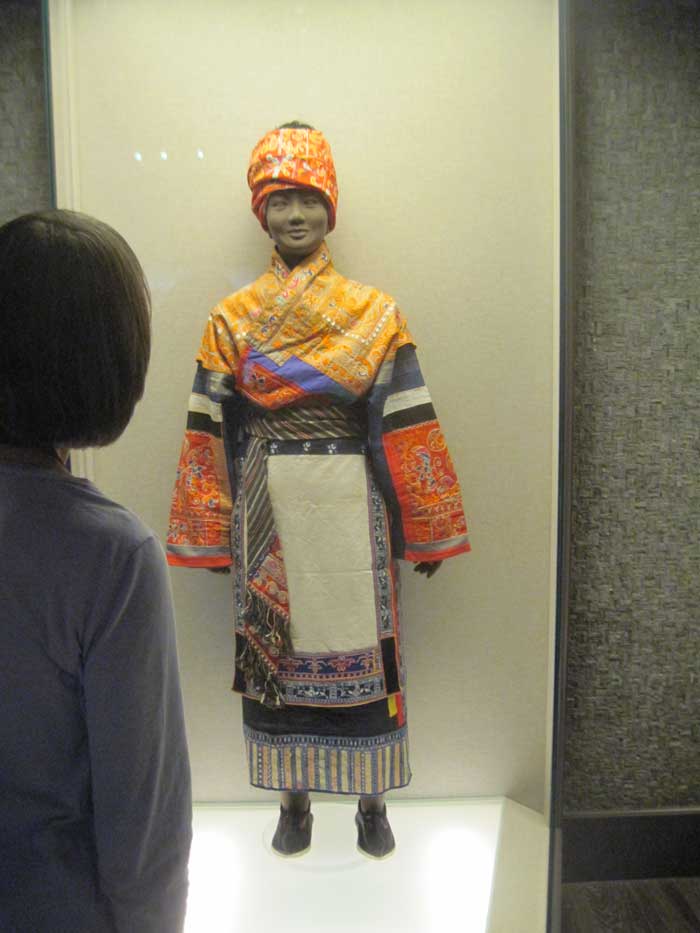



Here is a photo of part of downtown Shanghai. Very clean and modern.

We went to the airport, which had a very imposing terminal, and took a plane to Yichang, where we started our Yangtze River Cruise.

To continue our trip, go to the Yangtze River page.
